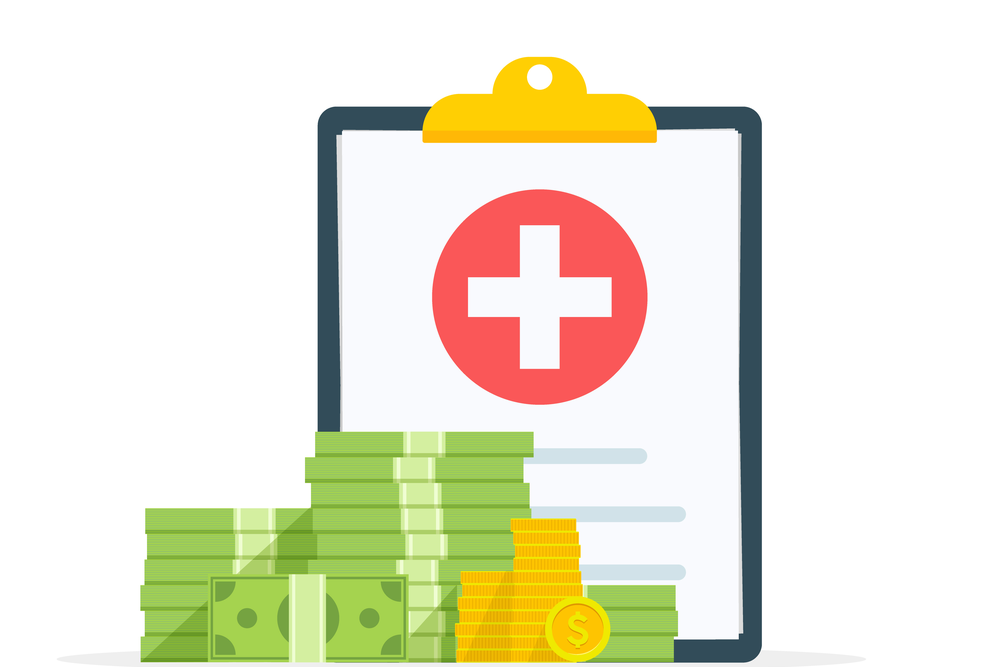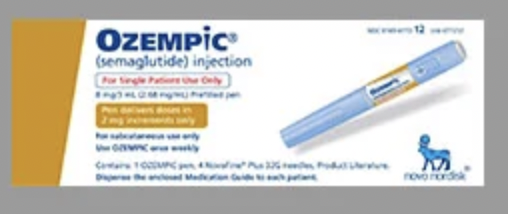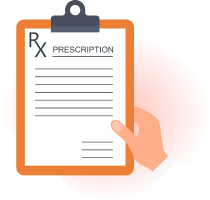Understanding ADHD and Its Treatment: A Comprehensive Guide
Attention-Deficit/Hyperactivity Disorder (ADHD) is a common but complex neurodevelopmental condition characterized by symptoms of inattention, hyperactivity, and impulsivity. Although traditionally associated with childhood, ADHD can persist throughout adolescence and into adulthood, often affecting various aspects of an individual's personal, academic, and professional life.
The Centers for Disease Control and Prevention (CDC) estimates that nearly 6 million children in the U.S. have been diagnosed with ADHD, with many continuing to experience symptoms as adults . Effective treatment is essential to help individuals manage these symptoms and lead successful lives. This comprehensive guide from SaveHealth explores ADHD in depth, including popular medications, non-drug interventions, and the importance of a holistic treatment plan. You can see discounts on ADHD prescriptions on SaveHealth and edit the location to see savings at Pharmacies near you.
What Causes ADHD?
The exact cause of ADHD remains unclear, but research suggests a combination of genetic, neurological, and environmental factors. Studies have shown that individuals with ADHD often have structural and functional differences in brain regions that regulate attention, executive function, and impulse control.
Key Contributing Factors
Genetics: ADHD tends to run in families, indicating a strong hereditary component.
Neurobiology: Brain imaging studies reveal differences in neurotransmitter activity, especially involving dopamine and norepinephrine.
Environmental Influences: Exposure to tobacco, alcohol, or lead during pregnancy, low birth weight, and early childhood adversity may increase the risk.
Signs and Symptoms
Symptoms of ADHD fall into two main categories:
Inattention – Trouble focusing, forgetfulness, careless mistakes, difficulty organizing tasks.
Hyperactivity/Impulsivity – Excessive movement, fidgeting, difficulty waiting turns, interrupting others.
ADHD Subtypes
Predominantly Inattentive: Often diagnosed later, especially in girls.
Predominantly Hyperactive-Impulsive: Common in young children.
Combined Type: The most common subtype, featuring symptoms of both inattention and hyperactivity.
Treatment Strategies for ADHD
ADHD is best managed through a multimodal treatment approach, which includes a combination of behavioral therapies, educational supports, lifestyle changes, and when appropriate, medication.
1. Behavioral Therapy
Behavioral interventions are often the first-line treatment for young children and play a critical role across all ages. Techniques include:
Parent training to reinforce positive behaviors.
Cognitive-behavioral therapy (CBT) to address negative thinking patterns and build coping strategies.
Behavioral classroom management to improve attention and reduce disruptions.
2. Educational Support
IEPs and 504 Plans: In the U.S., students with ADHD may qualify for an Individualized Education Program (IEP) or a Section 504 plan, which ensures tailored accommodations like extra time on tests or preferential seating.
3. Coaching and Skill-Building
ADHD coaches can help with organization, goal setting, and accountability, especially for adolescents and adults.
Time management and executive function coaching are particularly useful.
4. Diet and Exercise
Though not a standalone treatment, lifestyle interventions can help mitigate symptoms:
Regular physical activity has been shown to improve mood and attention.
Nutritional support, including omega-3 fatty acids, may offer modest benefits .
5. Mindfulness and Meditation
Practices like mindfulness-based cognitive therapy (MBCT) and yoga have shown promise in improving emotional regulation and attention span .
Why Medication May Be Necessary
While behavioral strategies form an important part of treatment, medication often becomes essential, especially for individuals with moderate to severe ADHD.
1. Addressing Neurochemical Imbalances
ADHD involves dysregulation of dopamine and norepinephrine pathways in the brain. Stimulant and non-stimulant medications help restore balance, improving focus, motivation, and impulse control.
“For many individuals with ADHD, medication provides the scaffolding that allows other therapies to work effectively,” — Dr. Timothy Wilens, M.D., Harvard Medical School
2. Improving Daily Functioning
Medication can significantly improve:
Academic and occupational performance
Interpersonal relationships
Self-esteem
Sleep and appetite (in some cases)
3. When Symptoms Are Severe
In cases where hyperactivity or impulsivity puts a child at risk of injury, or when symptoms lead to academic failure or social isolation, pharmacological treatment may be urgently needed to stabilize behavior.
4. Complement to Other Therapies
Medications are not a "magic bullet" but can enhance the effectiveness of coaching, therapy, and behavioral plans by allowing individuals to better engage in these treatments.
Popular Medications for ADHD
Stimulant Medications
Stimulants are the most effective and commonly prescribed ADHD medications, working quickly to boost neurotransmitters that regulate focus and self-control.
Amphetamine-Based
Adderall (amphetamine/dextroamphetamine)
IR: 4–6 hours duration
XR: Up to 12 hours
One of the most widely prescribed stimulants.
See prices and select an Adderall coupon from a pharmacy near you on SaveHealth.com.
Vyvanse (lisdexamfetamine)
A prodrug activated in the body.
Lower potential for misuse.
Duration: 10–14 hours.
See prices and select a Vyvanse coupon from a pharmacy near you on SaveHealth.com.
Dexedrine (dextroamphetamine sulfate)
Available in spansule form for longer action.
Often used when patients respond better to pure dextro isomers.
Methylphenidate-Based
Ritalin (methylphenidate)
Short-acting and long-acting versions available.
Useful for children who need quick onset for school hours.
See prices and select a Ritalin coupon from a pharmacy near you on SaveHealth.com.
Concerta (methylphenidate ER)
Extended-release format for full-day coverage.
Mimics 3 doses of Ritalin over time.
See prices and select a Concerta coupon from a pharmacy near you on SaveHealth.com.
Focalin (dexmethylphenidate)
More refined than Ritalin, using only the active isomer.
Less jitteriness in some users.
See prices and select a Focalin coupon from a pharmacy near you on SaveHealth.com.
Daytrana
A methylphenidate patch worn on the hip.
Useful for children who struggle with swallowing pills.
See prices and select a Daytrana coupon from a pharmacy near you on SaveHealth.com.
Non-Stimulant Medications
Non-stimulants may be chosen when:
A stimulant is ineffective or causes side effects.
There’s concern about misuse or addiction.
The patient has co-existing conditions like anxiety or tics.
Atomoxetine (Strattera)
A selective norepinephrine reuptake inhibitor (NRI).
Takes 2–4 weeks to see full benefits.
Does not carry abuse potential.
See prices and select a Atomoxetine coupon from a pharmacy near you on SaveHealth.com.
Alpha-2 Adrenergic Agonists
Guanfacine (Intuniv)
Helps with emotional dysregulation and sleep problems.
Often used in combination with stimulants.
See prices and select a Guanfacine coupon from a pharmacy near you on SaveHealth.com.
Clonidine (Kapvay)
Helps reduce hyperactivity and impulsivity.
May help with tics or insomnia.
See prices and select a Clonidine coupon from a pharmacy near you on SaveHealth.com.
Other Off-Label Options
Bupropion (Wellbutrin)
An antidepressant that also enhances dopamine and norepinephrine.
Sometimes used in adults with both ADHD and depression.
Viloxazine (Qelbree)
FDA-approved in 2021.
Non-stimulant for children and adolescents.
Appears promising, with fewer side effects for some.
Side Effects and Monitoring
All ADHD medications require monitoring for potential side effects. These may include:
Stimulants: Appetite suppression, insomnia, irritability, increased heart rate or blood pressure.
Non-stimulants: Fatigue, dizziness, nausea, dry mouth, mood swings.
Regular follow-ups with a healthcare provider are crucial. Pediatric patients may require growth monitoring, while adults should be assessed for cardiovascular health and mental health comorbidities.
ADHD in Adults
While often seen as a childhood condition, ADHD in adults can manifest in different ways:
Chronic lateness
Poor time management
Impulsivity in financial or relationship decisions
Emotional dysregulation
Job instability
Treatment for adult ADHD typically includes medication, CBT, and coaching. According to the American Psychiatric Association, approximately 4.4% of U.S. adults have ADHD, but many remain undiagnosed.
ADHD
ADHD is a lifelong condition that can profoundly impact quality of life without proper management. Fortunately, modern treatment strategies — including both stimulant and non-stimulant medications — provide powerful tools to help individuals thrive. While behavioral interventions, education plans, and lifestyle adjustments are essential components, medication remains a cornerstone of treatment for many, offering a path toward stability, focus, and success.
If you or your child has been diagnosed with ADHD, speak with your healthcare provider about a personalized treatment plan. At SaveHealth, we believe that knowledge is the first step toward empowerment, and no one should have to navigate ADHD alone.
References
Centers for Disease Control and Prevention (CDC). ADHD Data and Statistics
National Institute of Mental Health (NIMH). What is ADHD?
Bloch, M. H., & Qawasmi, A. (2011). Omega-3 fatty acid supplementation for the treatment of children with ADHD. Journal of the American Academy of Child & Adolescent Psychiatry, 50(10), 991-1000.e3.
Zylowska, L., et al. (2008). Mindfulness meditation training in adults and adolescents with ADHD. Journal of Attention Disorders , 11(6), 737–746.
Wilens, T. E., Spencer, T. J. (2010). Understanding Attention-Deficit/Hyperactivity Disorder from childhood to adulthood. Postgraduate Medicine, 122(5), 97–109.
American Psychiatric Association. (2013). Diagnostic and Statistical Manual of Mental Disorders (5th ed.)

Related Articles

GLP-1 Medications Compared: Benefits and Differences
GLP-1 medications have rapidly become some of the...

Zoloft vs Lexapro: A Comprehensive Comparison of Two Leading SSRIs
In the treatment of mental health disorders like...

Understanding ADHD and Its Treatment: A Comprehensive Guide
ADHD is a common but complex neurodevelopmental condition...

Atorvastatin and the Fight Against High Cholesterol: A Lifesaving Drug for Millions
Atorvastatin is a synthetic statin drug that belongs to...
